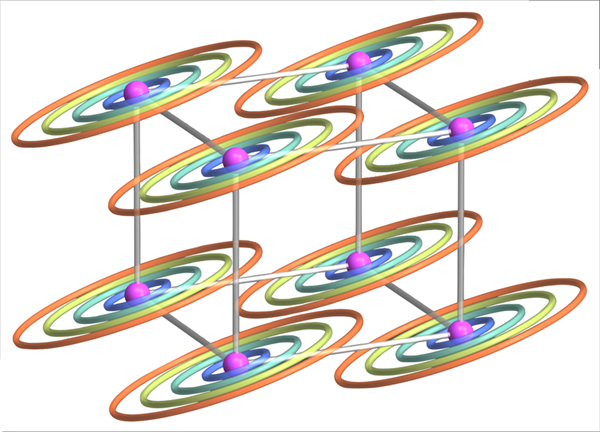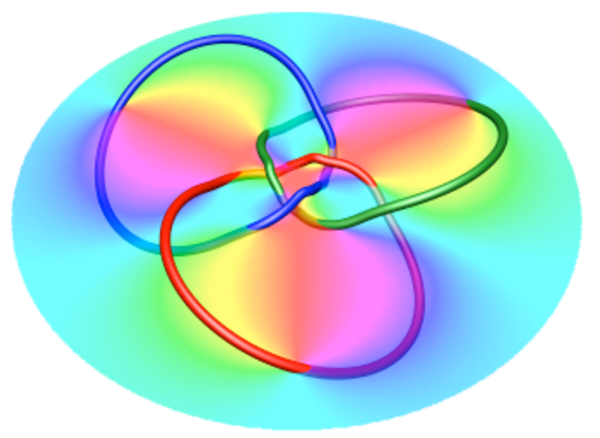Centre for Topological Science and Engineering
 Our research utilises the principles of topology to explain increasingly complex phenomena and engineer new structures.
Our research utilises the principles of topology to explain increasingly complex phenomena and engineer new structures.
Topological properties, like the number of holes or bridges in a sponge, play a role in the behaviour of certain materials, such as the way they conduct electricity or how light propagates through them. This has led to an explosion of research and development into new kinds of materials with unprecedented properties, designed using fundamental physical and mathematical principles which can be fabricated, and manufactured in the future.
The Centre for Topological Sciences and Engineering unites researchers from all Schools in the College of Engineering and Physical Sciences and elsewhere at the University, to study how topology helps us to understand the behaviour of physical, biological and other systems, and to implement principles of topological design into engineering.
Birmingham's history of topological research
Research in Topological Science in Birmingham goes back to the 1970s, with the work of Professor Tony Skyrme, who proposed a model of fundamental particles based as topological wave packets now called topological solitons. These skyrmions are studied as models of nuclei.
Skyrmions appear as particle-like excitations in materials like magnetic films, Bose-Einstein condensates and liquid crystals. Magnetic skyrmions might even be the basis of next-generation low-energy data storage for computers!
David Thouless and Michael Kosterlitz, also working in the University in the 1970s, discovered a phase transition in two-dimensional systems where systems of pairs of vortices with opposite topological charges become unbound. For this appreciation of the role of topology in the physics of materials, Thouless and Kosterlitz were awarded the 2016 Nobel Prize for Physics, shared with Duncan Haldane.
Research areas
Metamaterials
Metamaterials are artificially engineered materials that exhibit electromagnetic properties unfound in natural materials. By utilizing the principle of topology, one can design metamaterials that supports one-way transport of electromagnetic waves immune from scattering. (Professor Shuang Zhang, Physics)
Metal 3D printing
Metal 3D printing was used to create sonic crystals, which are topologically designed structures that allow wave scattering due to the periodic arrangement in the structure. Sonic crystals can be used to control noise levels, and also as waveguides or collimators. The use of metal 3D printing enables the creation of a tailored structure that cannot be manufactured otherwise. Potential opportunities include the use of smart materials to build sonic crystals in order to create a tunable structure depending on an external stimulus (e.g. thermal, magnetic, structural, etc…). (Professor Moataz Attallah, Metallurgy and Materials)
Synthetic dimensions

Synthetic dimensions
The framework of topological design takes us beyond our 3D physical world, as exotic effects are expected to emerge if a structure extends along four or even more spatial dimensions. We are working to make this an experimental reality by proposing how recently-demonstrated techniques, such as “synthetic dimensions”, can artificially mimic additional higher dimensions for cold atoms and photons. (Dr Hannah Price, Physics)
Knotted optical vortices
 In a light beam, the flow of light through space is similar to water flowing in a river. Although it often flows in a straight line – out of a torch, laser pointer, etc – light can also flow in whirls and eddies, forming dark lines in space called optical vortices. Optical vortices are phase singularities, structuring the topology of light fields as places where all of the optical wavefronts merge. By controlling the topology of wavefronts with optical holograms, we can design 3D structured light fields with knotted optical vortices. (Professor Mark Dennis, Physics)
In a light beam, the flow of light through space is similar to water flowing in a river. Although it often flows in a straight line – out of a torch, laser pointer, etc – light can also flow in whirls and eddies, forming dark lines in space called optical vortices. Optical vortices are phase singularities, structuring the topology of light fields as places where all of the optical wavefronts merge. By controlling the topology of wavefronts with optical holograms, we can design 3D structured light fields with knotted optical vortices. (Professor Mark Dennis, Physics)